Sea turns red as more than 150 dolphins are hacked to death – some beside their calves – in Faroe Islands’ annual ‘grind’
More than 150 dolphins have fallen victim to the latest horrific slaughter in the Faroe Islands, prompting a flood of criticism from shocked animal rights groups and outraged local residents.
It is estimated that 156 white-sided dolphins were deliberately killed within a few hours on Saturday in Skálabotnur during the traditional hunt known as grindadráp.
Shocking footage and video showed the helpless animals being stabbed and hacked in the bay, turning the water blood red, before being dragged ashore, lined up and executed.
Adult females were torn apart alongside their calves and their remains seeped through the wooden jetty into the water.
More than 150 dolphins have fallen victim to the latest gruesome massacre in the Faroe Islands
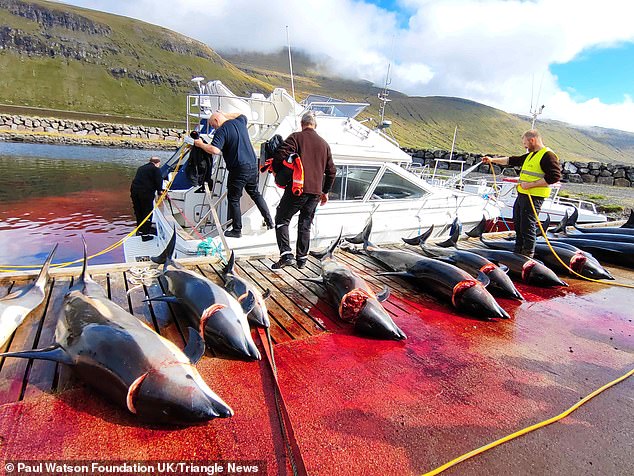
Dolphin carcasses are left on the wooden jetty, with blood seeping through the wooden slats and into the water
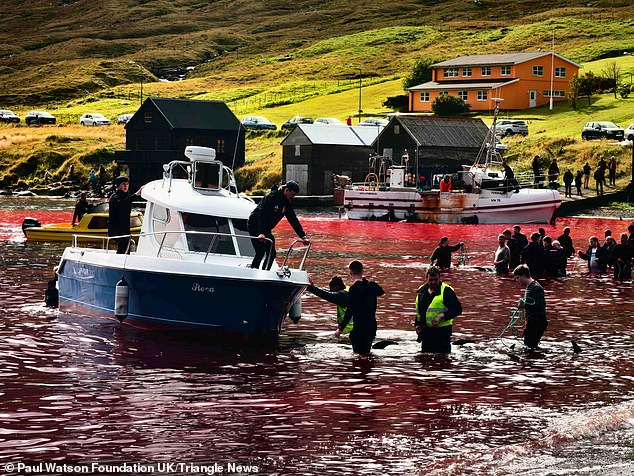
Shocking footage and video showed the helpless animals being stabbed and hacked in the bay, turning the water blood red, before being dragged ashore.
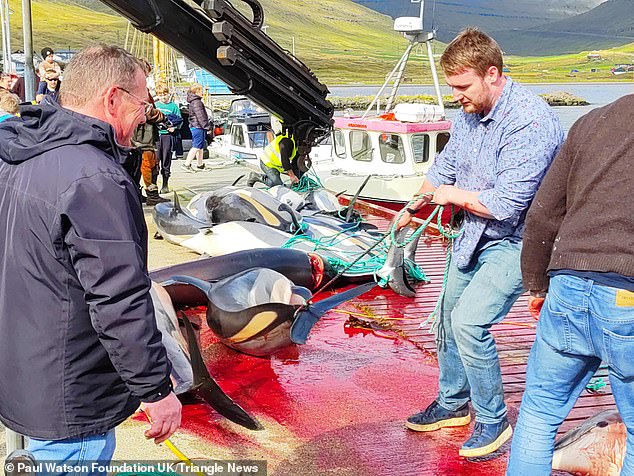
It is estimated that 156 Atlantic white-sided dolphins were deliberately killed in a few hours on Saturday in Skálabotnur during the traditional hunt known as grindadráp
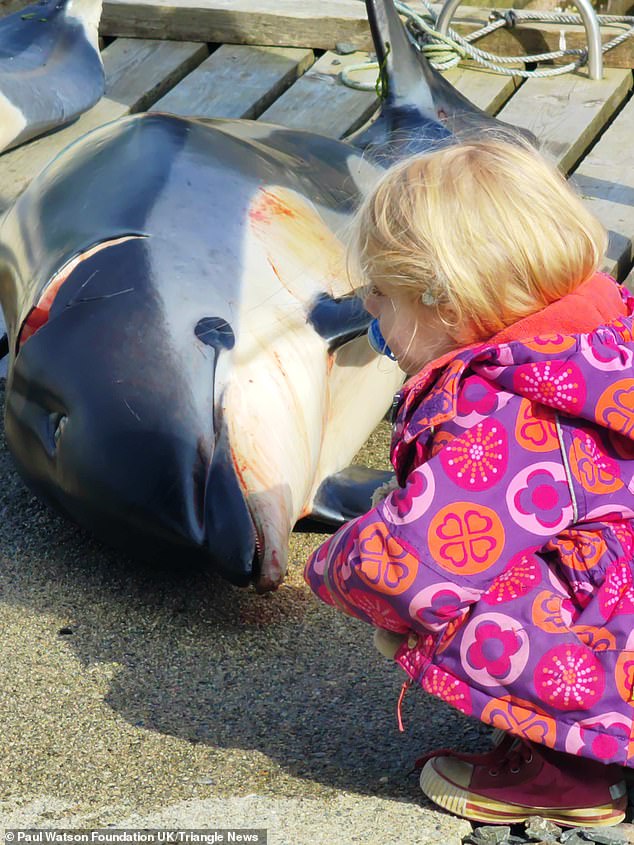
A toddler inspects the carcass of a dolphin killed in the massacre this weekend
The Faroe Islands are an autonomous archipelago that is part of the Kingdom of Denmark in the North Atlantic Ocean between Norway and Iceland.
The grindadráp, often referred to as grind, kills hundreds of pilot whales every year and was traditionally an important food source for the Faroese population.
Pilot whales are one of the largest dolphin species and are highly social animals that remain with their natal group throughout their lives.
During this fight, the locals use boats to herd the animals into shallow water. There, the hunters can stand waist-deep in water and stab the animals to death with spears and spikes, turning the water a deep red and creating dystopian scenes.
Today, however, this cruel practice is no longer necessary and continues largely as a tradition, angering animal rights activists around the world who criticize the practice as a form of reckless killing.
And with each passing year, those who oversee the hunt face increasing resistance from their own people, who believe that the hunt should be limited so that only a small number of dolphins are taken.
They also argue that certain species, such as the white-sided dolphin or the bottlenose dolphin, should be excluded from hunting.
On September 12, 2021, 1,428 white-sided dolphins were killed on the same beach, sparking widespread outrage.
To appease critics, Faroese authorities have introduced a temporary quota of 500 white-sided dolphins per year for the years 2022 and 2023.
The Faroese themselves claim that this is part of their tradition and that hunting provides free food for their community.
But more people are still speaking out on social media, questioning why the killing of white-sided dolphins is still allowed at all.
This year’s routine prompted several residents to take to social media to comment, arguing that the practice is unnecessary and that islanders would be better off seeing the dolphins swimming off the coast.
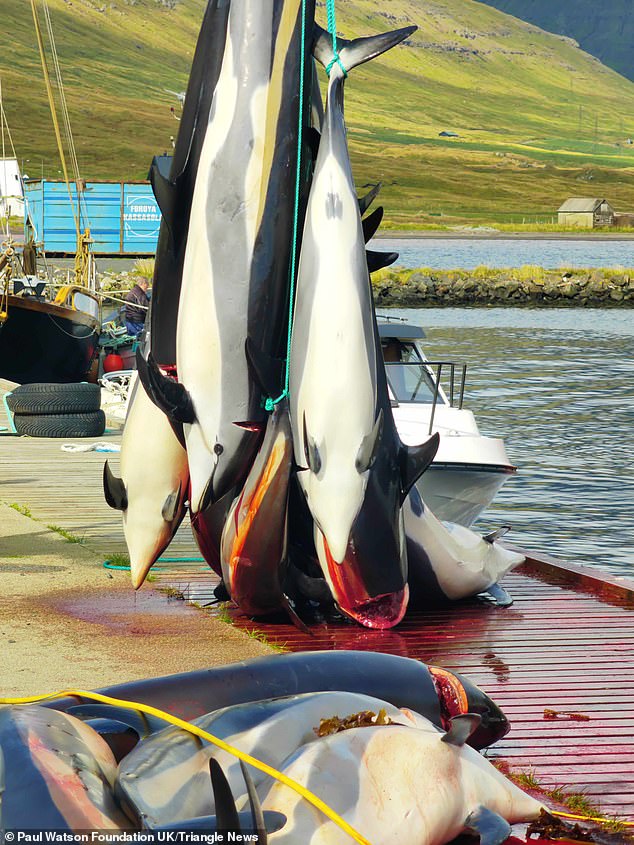
Dolphins are cut open before being lifted by their tails
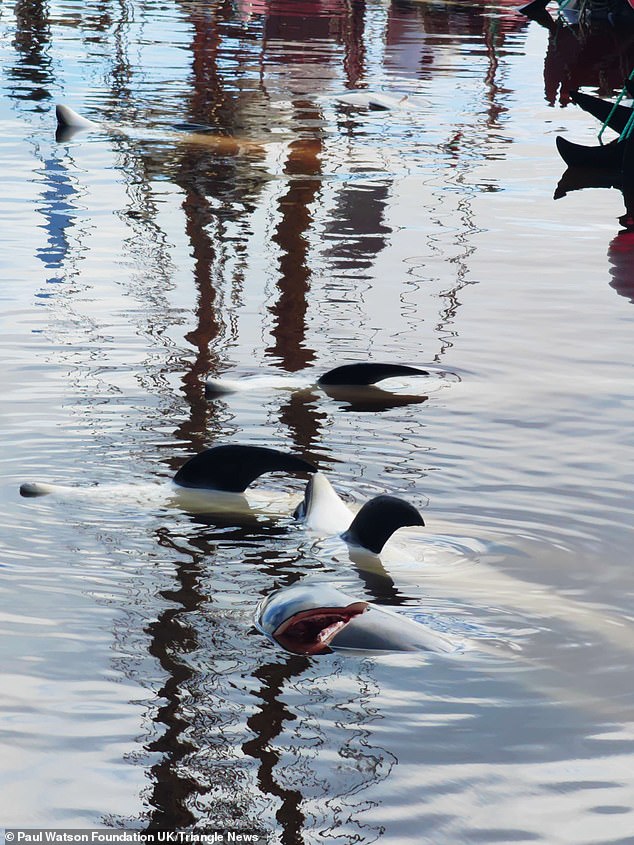
Dolphins are seen in the bay with gaping holes
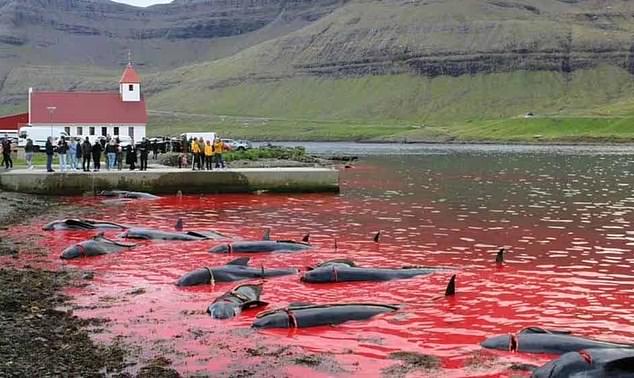
Photos show the first ‘grind’ of 2024 in June, where 40 whales were slaughtered
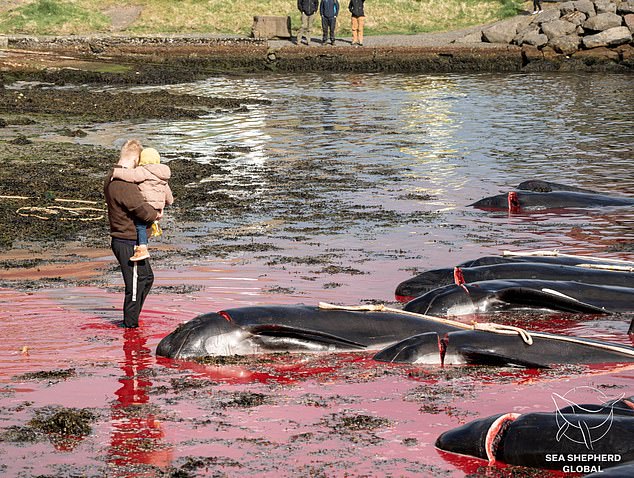
A man and his small child are seen looking at the slaughtered whales on the shore after the hunt in June
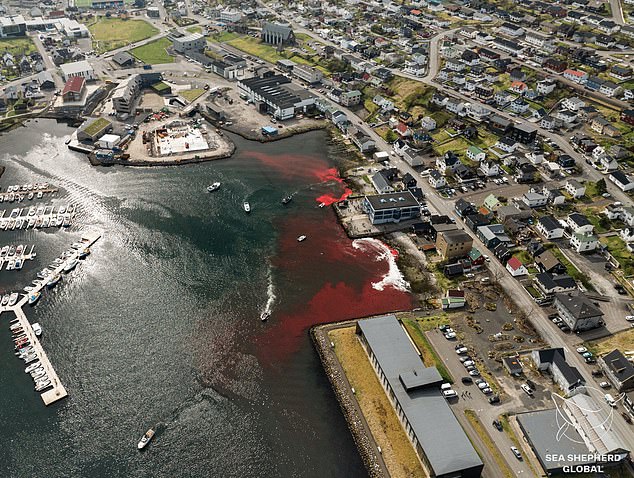
An aerial photo shows blood flowing into the sea, turning the harbour red earlier this year
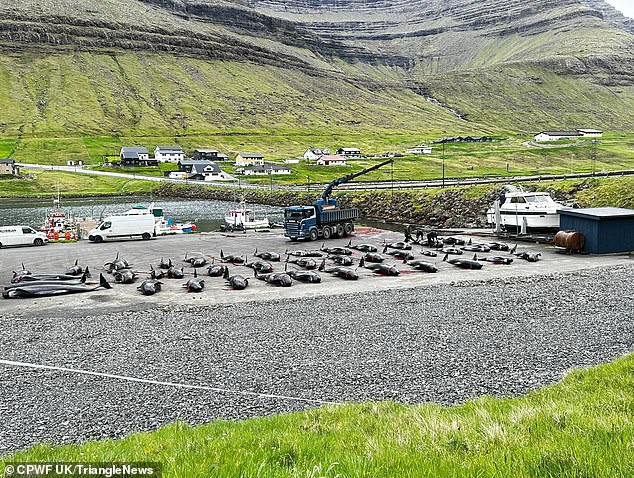
Pilot whales are laid on the ground after being slaughtered during the Grindadrap earlier this year
A resident of Skálabotnur, Tóta Árnadóttir, said: ‘I think the joy they would experience would be much greater if we, who live by the fjord, could watch them.’
Tórun Beck said: ‘The pilot whales from last week should not have been driven ashore because there were enough of them. But now you are also killing the Atlantic white-sided dolphin.
“Who’s hungry? Shame on you.”
Irdi Jacobsen added: ‘We have no tradition of killing white-sided dolphins, and I don’t understand why we would do it now.’
The Atlantic white-sided dolphin has only been present in the Grindadráp since 1992.
They are more agile and faster than the long-finned pilot whales that are traditionally hunted. The ability to hunt them today is only due to improvements in boats that offer more power, speed and agility than the traditional Faroese vessels.
Rob Read, Chief Operating Officer of the Paul Watson Foundation UK, an ocean conservation organisation that documents and campaigns against the grindadráp slaughter, said: ‘The grindadráp aside, the Faroese are a modern and prosperous society.
‘There is no need for this food to feed their communities and the current slaughter will not result in supermarkets having less food in stock.
‘Once again, tradition is being used as an excuse, just as in other countries tradition is used as an excuse for things like fox hunting and bullfighting.’
